Research
Physical factors shaping the probability density function (PDF) of \(T_{2m}\)
Temperature extremes affect human mortality, agricultural yields, and wildfires. Changes in temperature variability in a changing climate can further modify the odds and intensity of extreme temperature events. Thus, a fundamental understanding of how different physical factors (such as perturbations in land surface properties and atmospheric circulations) affect near-surface air temperature is key for an accurate temperature prediction under different climate states. My postdoc research seeks to improve our understanding of the separate contribution of the “land surface driven” and the “atmospheric driven” portion of temperature variability.
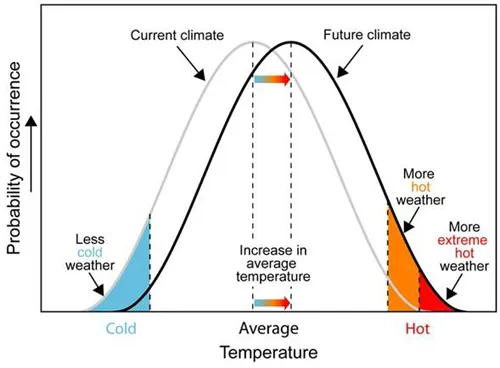
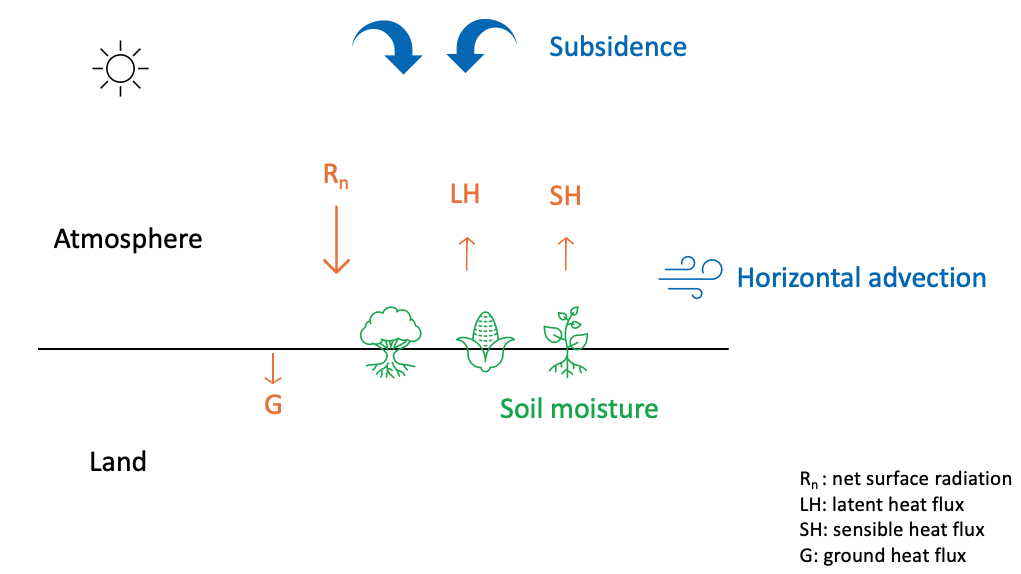
Further reading:
- Kong, McKinnon, Simpson, and Lagüe (2023), Understanding Responses of Summer Continental Daily Temperature Variance to Perturbations in the Land Surface Evaporative Resistance, Journal of Climate, 36, doi: https://doi.org/10.1175/JCLI-D-21-1011.1
Westerly Jet and Seasonal Transition of the East Asian Summer Monsoon
The East Asian summer monsoon has a unique seasonality characterized by several distinct intraseasonal stages with abrupt transitions in between. Following the spring rainfall in April/May, the pre-mei-yu starts and intensifies rainfall over southern China. The rain belt then jumps northward in June and forms the Chinese mei-yu, the Korean changma, and the Japanese baiu. The second jump occurs in July, marking the end of mei-yu and the onset of midsummer. The latitudinal position of esterlies impinging on the Tibetan Plateau behaves in a synchronous fashion with the seasonal transition of East Asian summer monsoonal rainfall.
Chiang et al. (2015) proposed a “jet transition hypothesis” that invoked a causal linkage between the latitudinal migration of westerlies across the Tibetan Plateau and the timing and duration of the intraseasonal stages of the East Asian summer monsoon in the past climate. During my Ph.D., I explored this hypothesis across a wide range of scenarios by combining observational analysis, fluid dynamics theory, and climate modeling.
See a nice summary from my advisor John Chiang’s website.
Below figures provide an overview of the climatological seasonal evolution of westerlies and East Asian summer monsoon. Data source (add later).
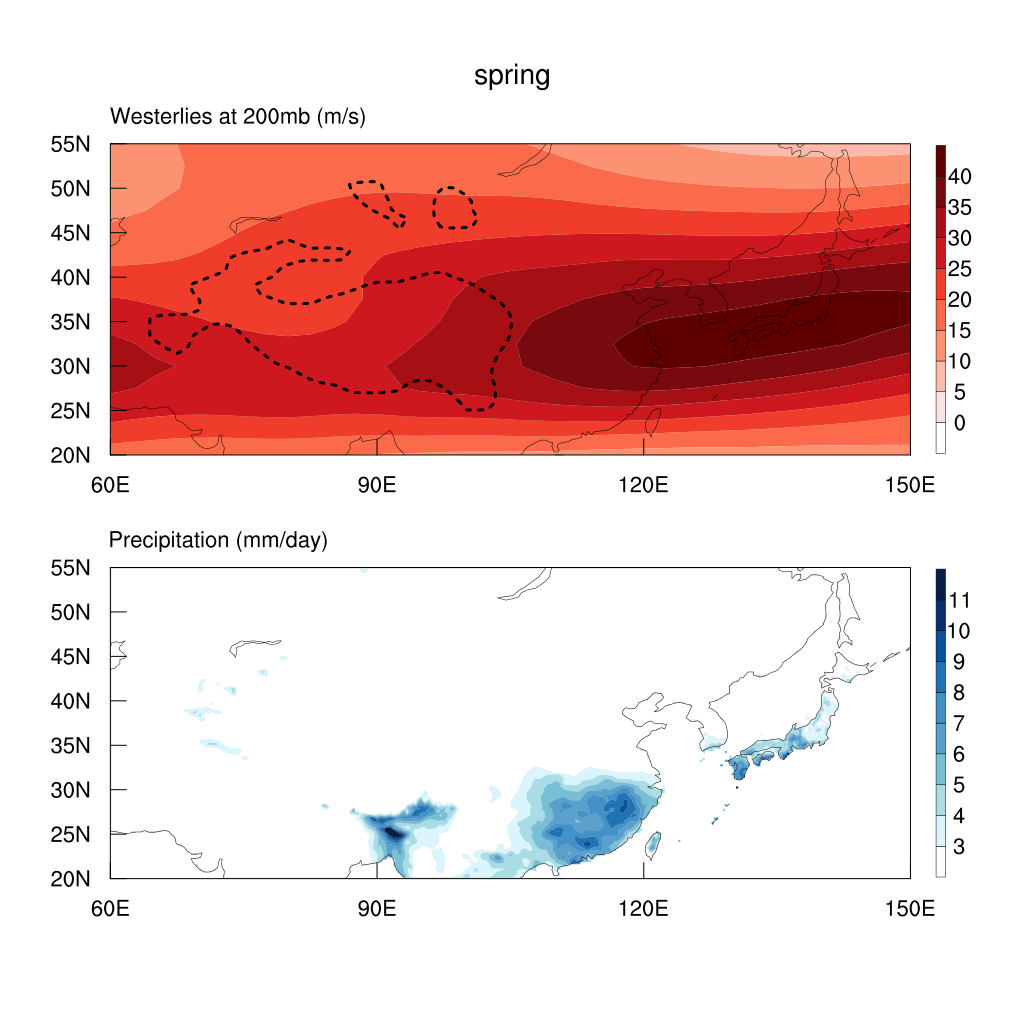
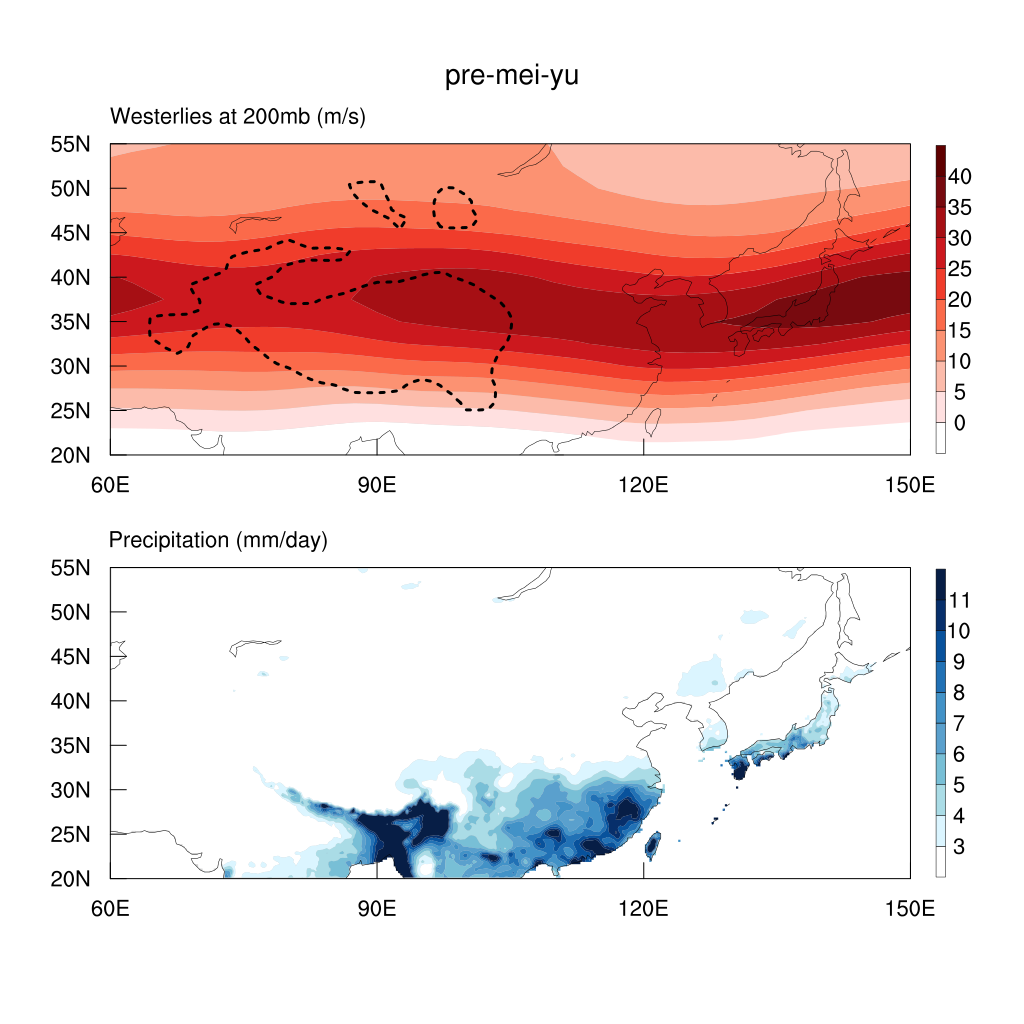
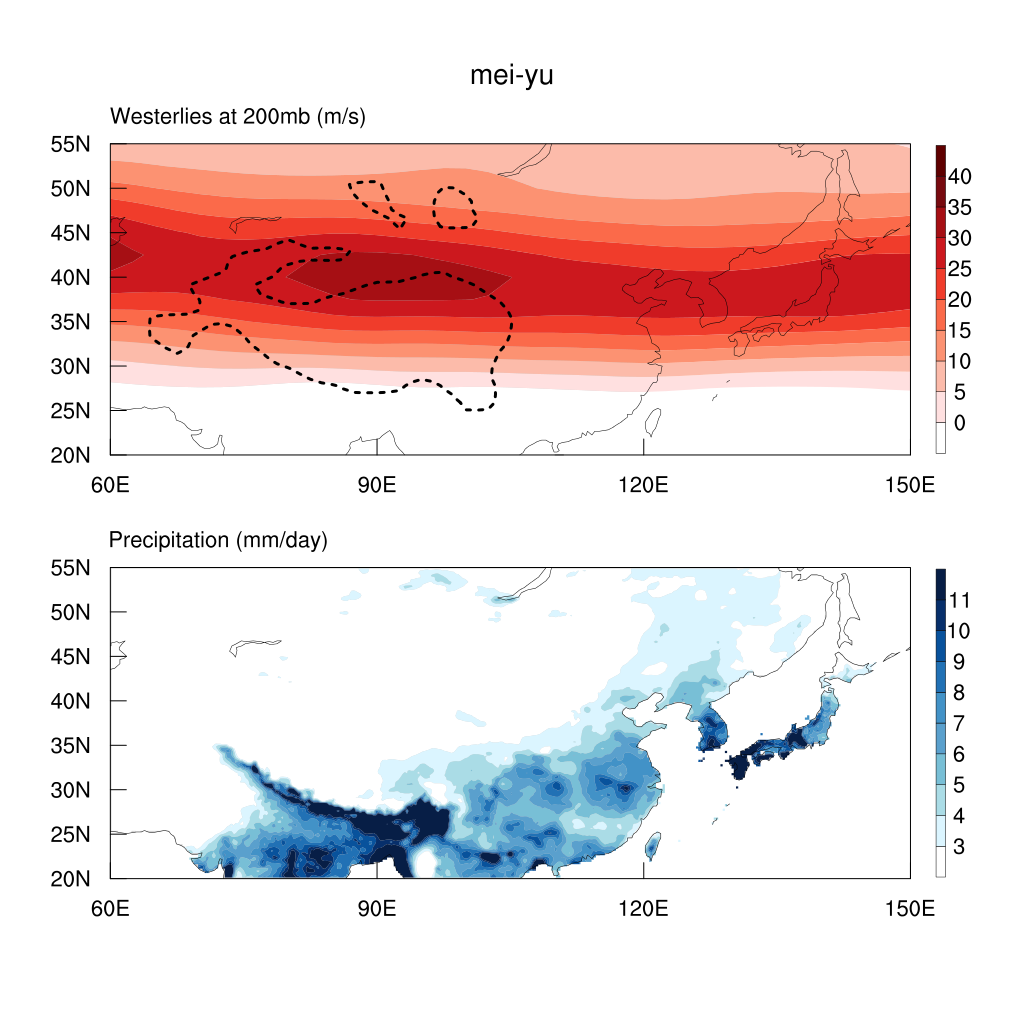
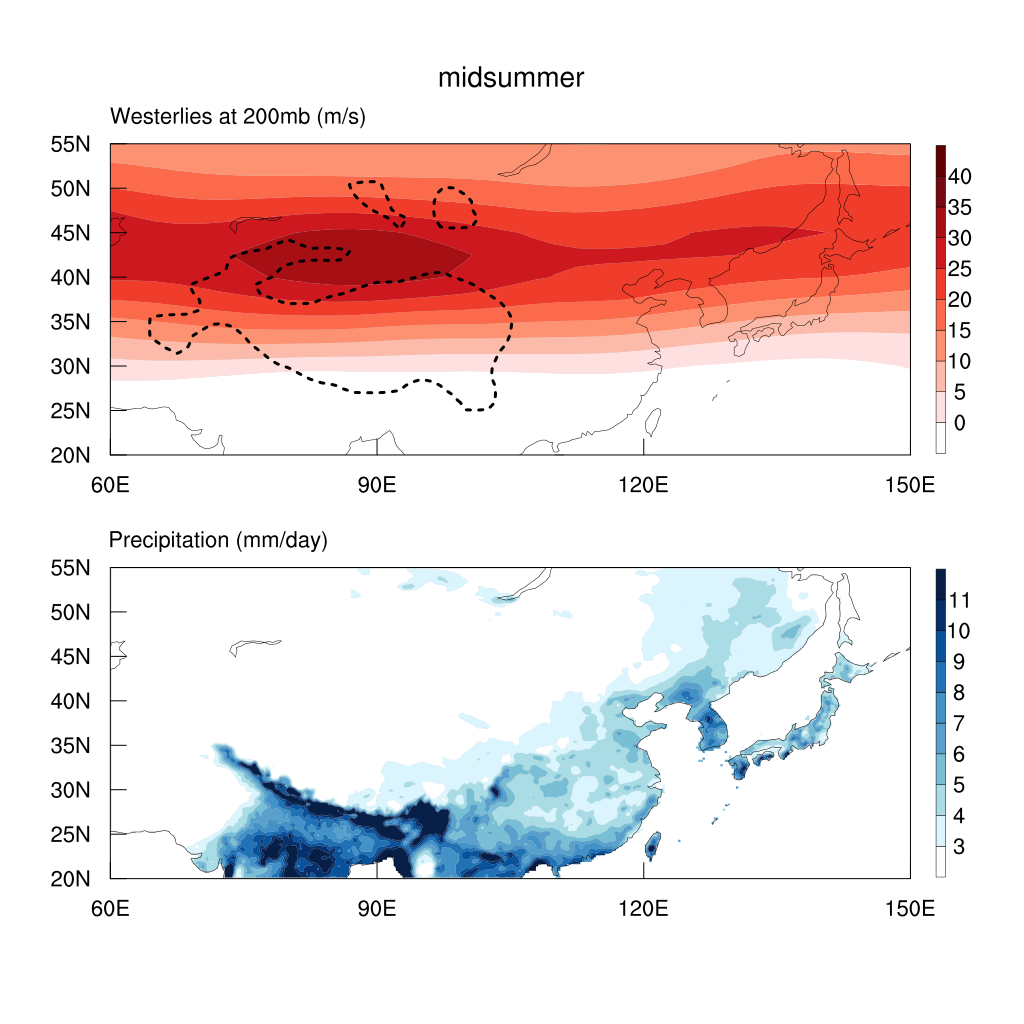
Further reading:
- Kong and Chiang (2020), Southward Shift of Westerlies Intensifies the East Asian Early Summer Rainband Following El Niño. Geophysical Research Letters, 47(17), e2020GL088631.
- Chiang, Kong, Wu, and Battisti (2020), Origins of the East Asian Summer Monsoon Seasonality. Journal of Climate, 33(18), 945-7965, doi:10.1175/JCLI-D-19-0888.1
- Kong and Chiang (2020), Interaction of the westerlies with the Tibetan Plateau in determining the mei-yu termination. Journal of Climate, 33, 339-363, doi:10.1175/JCLI-D-19-0319.1.
- Chiang, Fischer, Kong, and Herman (2019), Intensification of the Pre-Meiyu rainband in the late 21st century. Geophysical Research Letters, 46(13), 7536-7545, doi:10.1029/2019GL083383.
- Zhang, Griffiths, Chiang, Kong, Wu, Atwood, Huang, Cheng, Ning, and Xie (2018), East Asian hydroclimate modulated by the position of the westerlies during Termination I, Science, 362, 580-583, doi:10.1126/science.aat9393.
- Chiang, Swenson, and Kong (2017), Role of seasonal transitions and the westerlies in the interannual variability of the East Asian summer monsoon precipitation. Geophysical Research Letters, 44(8), 3788-3795, doi:10.1002/2017GL072739.
- Kong, Swenson, and Chiang (2017), Seasonal transitions and the westerly jet in the Holocene East Asian Summer Monsoon. Journal of Climate, 30, 3343-3365, doi:10.1175/JCLI-D-16-0087.1.
Stratospheric Northern Annular Mode and Ural Blocking High
The Ural Blocking High is one of the major weather systems that have significant impacts on winter weather and short-term climate variability of North China. The purpose of this project is to study the influence of Northern Hemisphere winter stratospheric circulation anomalies on the Ural Blocking High. We composited the Ural Blocking High relative to positive and negative stratospheric Northern Annular Mode (NAM) phases throughout 1958-2010. During the negative stratospheric NAM phase, the Ural Blocking High has higher frequencies of occurrence, longer life cycle, stronger amplitude, and exerts stronger influences on Northern China. Three-dimensional Eliassen-Palm (E-P) flux analysis demonstrates a stronger vertical component of E-P fluxes in the Ural Mountain region during the negative NAM phase than the positive NAM phase. It suggests that stratospheric circulations during the negative NAM phase favor upward wave propagation and thus the development of the Ural Blocking High. The results here have important implications for medium-range forecasting of winter weather or short-term climate variability in North China.
Further reading:
- Kong and Hu (2014), The influence of stratospheric NAM anomalies on the Ural blocking high (in Chinese, with English abstract). Acta Scientiarum Naturalium Universitatis Pekinensis, 50(3), 445-455, doi:10.13209/j.0479-8023.2014.082.